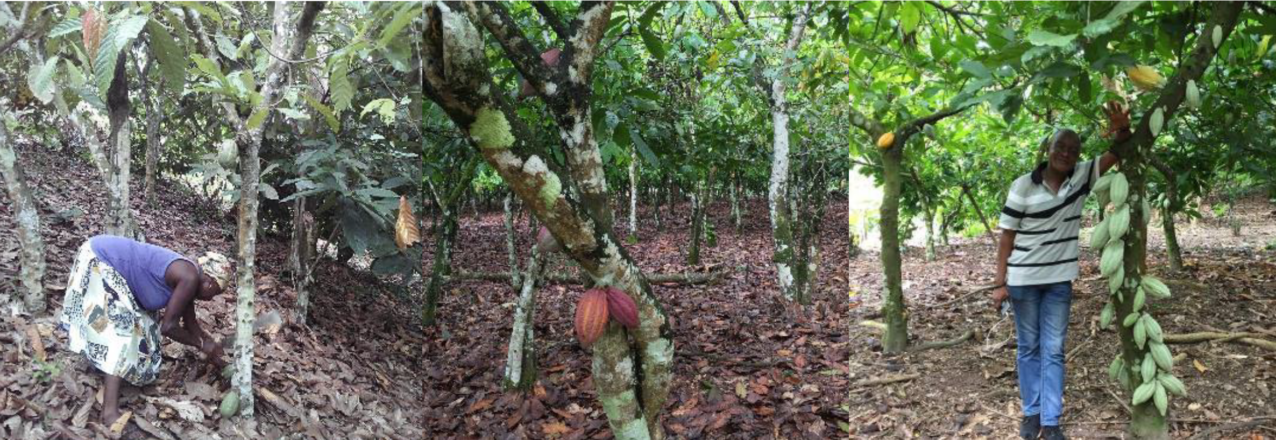INTEGRATED LAND AND RESOURCE GOVERNANCE TASK ORDER UNDER THE STRENGTHENING TENURE AND RESOURCE RIGHTS II (STARR II) IDIQ
INTRODUCTION
The active and important role vegetation and soil play in the global carbon cycle and global climate change is now internationally recognized. Vegetation and soil can act as both a net source and a net sink of greenhouse gas (GHG), depending on how the land is managed. Alterations in land use management techniques that result in changes to net GHG emissions are now a significant component to the regulatory and voluntary actions taking place globally to combat climate change. The purpose of this document is to provide standard field measurement approaches to assist in quantifying the amount of carbon stored within the organic pools found within cocoa agroforestry systems (Theobroma cacao). This document has been adapted from the original generic Standard Operating Procedures (SOPs) for evaluating terrestrial carbon stocks across all land uses1, tailored specifically for evaluating terrestrial carbon stocks in cocoa agroforestry systems. The methods presented in each SOP have been developed over time by foresters and ecologists to accurately and efficiently estimate carbon stocks. This manual does not specify guidance on stratification, sampling design, sampling intensity, the spatial distribution of sampling points, pool measurement selection, or the methods needed to transform field measurement data into carbon stock estimates. Therefore, additional guidance is required prior to any field data collection. The SOPs present an approach appropriate for shaded cocoa agroforestry systems in Ghana. However, all the field measurement methods presented in this document may require adaptation for the specific ecosystem, land cover, and vegetation type in the location where sampling will take place. It is therefore expected that this manual will be updated overtime as the carbon market changes and as terrestrial carbon science evolves. The SOP manual is also not specific to any regulatory or voluntary market standard such as the Clean Development Mechanism (CDM), Climate Action Reserve (CAR), American Carbon Registry (ACR), Verified Carbon Standard (VCS), CarbonFix, or PlanVivo. The SOPs should not be conducted without receiving extensive field training in the measurement methods performed by a qualified forester or ecologist.


